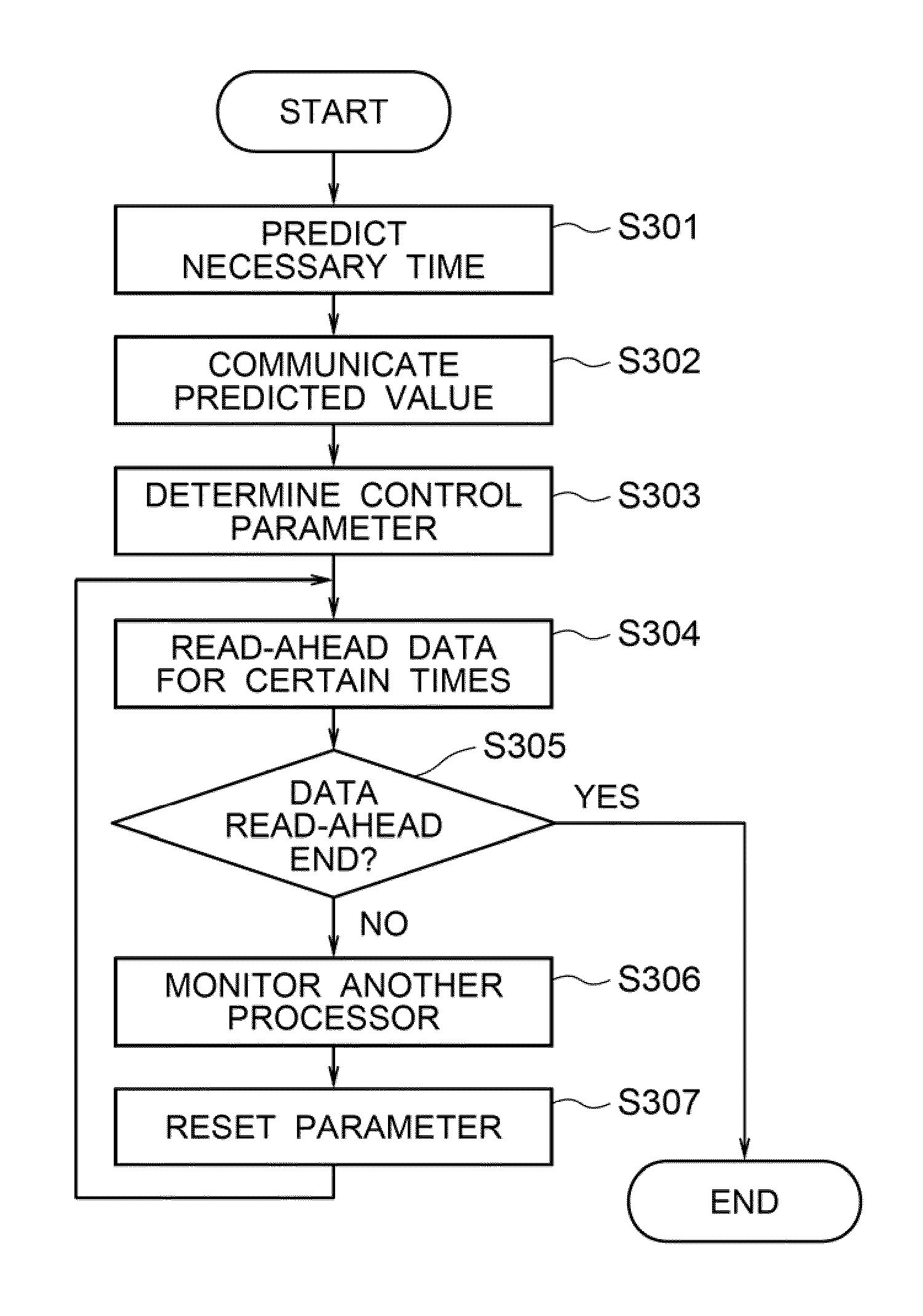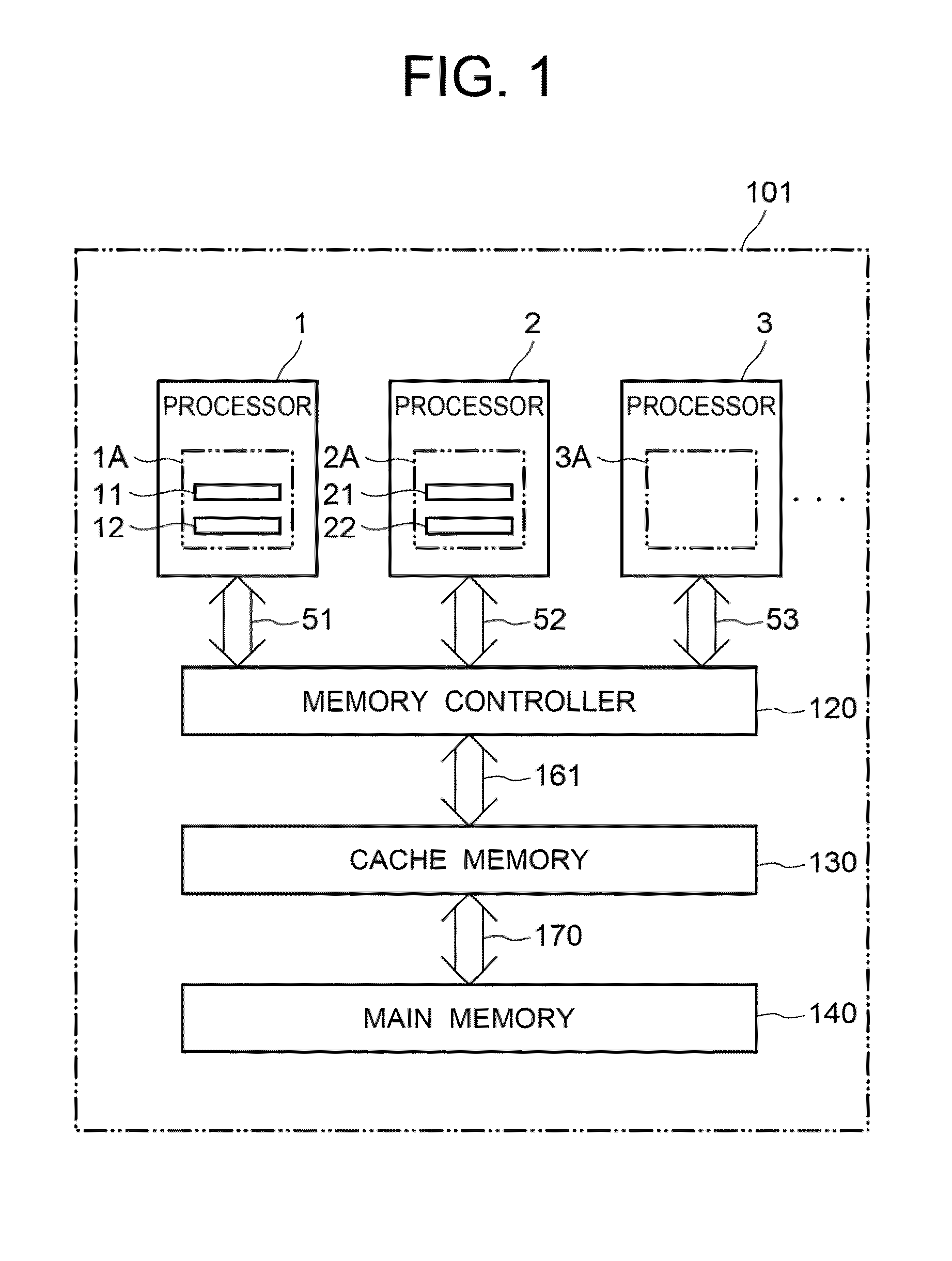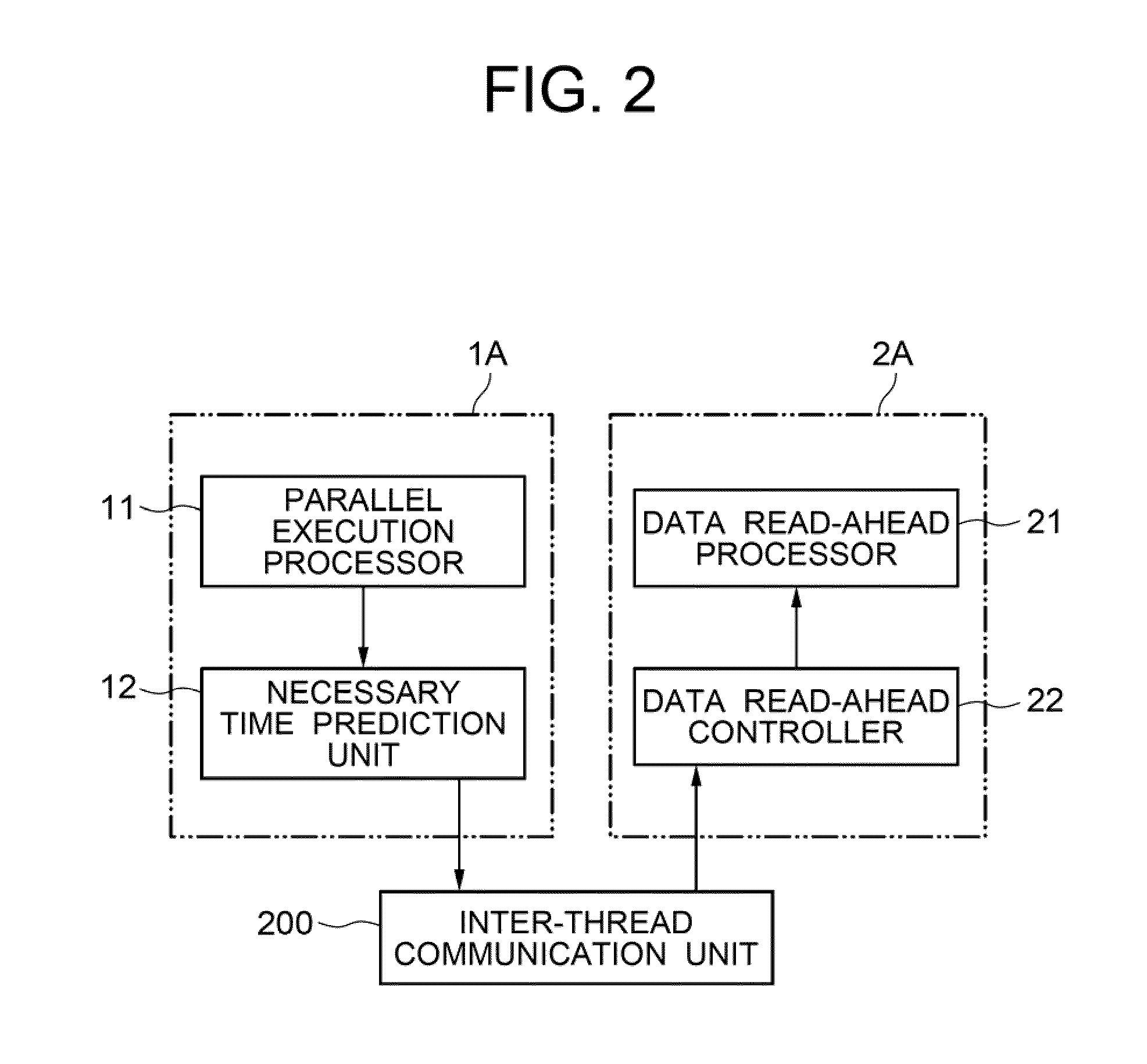Memory access control system, memory access control method, and program thereof
a memory access control and memory access technology, applied in the field of memory, can solve the problems of high-speed decoding, rare storage space in cache memory, and inability to effectively access memory, and achieve the effect of deteriorating processing capability and effective memory access
- Summary
- Abstract
- Description
- Claims
- Application Information
AI Technical Summary
Benefits of technology
Problems solved by technology
Method used
Image
Examples
first exemplary embodiment
Operation of First Exemplary Embodiment
[0064]Next, the overall operation of the first exemplary embodiment will be described based on FIGS. 2 and 3.
[0065]First, before the parallel execution processor 11 operates, the necessary time prediction unit 12 predicts a necessary time required for the parallel execution processor 11 using an input value which is input to the processor 11, and outputs the necessary time to the processing system 2A (step S101, necessary time prediction step).
[0066]Next, in the processing system 2A, the data read-ahead controller 22 receives a predicted value of the necessary time obtained in the step S101 via the inter-thread communication unit 200 (step S102, necessary time predicted value receiving step).
[0067]The data read-ahead controller 22 determines a data read-ahead control parameter of the data read-ahead processor 21 based on the predicted value obtained. The determination of the control parameter is carried out such that the data read-ahead necessa...
second exemplary embodiment
[0072]Next, an example in which the memory access controlling system according to the present invention is applied to image decoding will be described as a second exemplary embodiment.
[0073]As shown in FIGS. 4 to 7, the memory access controlling system according to the second exemplary embodiment of the invention is constructed as a system which controls accesses to a cache memory in a data read-ahead process when a multi-core processor of a shared-memory type processes, by accessing the cache memory, a task including a data read-ahead thread for reading ahead data of a corresponding address of the frame memory 515 for storing decoded image information in the memory and a parallel execution thread for storing decoded image information in which a differential image generated by inverse orthogonal transformation and a predicted image generated by motion compensation to be performed in parallel with the read-ahead of the address in the memory. The memory access controlling system has a...
third exemplary embodiment
Operation of Third Exemplary Embodiment
[0104]Next, operation of the third exemplary embodiment will be described based on the flowchart shown in FIG. 9.
[0105]First, the data read-ahead controller 22 determines a data read-ahead control parameter of the data read-ahead processor 21. Although a control parameter is determined based on the necessary time predicted by the necessary time prediction unit 12 in the first exemplary embodiment, in the third exemplary embodiment, a data read-ahead interval, which is a data read-ahead control parameter of the data read-ahead processor 21, is given beforehand as an initial value as an initial setting (step S201, data read-ahead interval initial value setting step).
[0106]Next, according to the control parameter determined in the step S201, a data read-ahead process is performed by the data read-ahead processor 21, and corresponding data is extracted from the main memory 140 and is stored in the cache memory 130 (step S202, data read-ahead proces...
PUM
 Login to View More
Login to View More Abstract
Description
Claims
Application Information
 Login to View More
Login to View More - R&D
- Intellectual Property
- Life Sciences
- Materials
- Tech Scout
- Unparalleled Data Quality
- Higher Quality Content
- 60% Fewer Hallucinations
Browse by: Latest US Patents, China's latest patents, Technical Efficacy Thesaurus, Application Domain, Technology Topic, Popular Technical Reports.
© 2025 PatSnap. All rights reserved.Legal|Privacy policy|Modern Slavery Act Transparency Statement|Sitemap|About US| Contact US: help@patsnap.com



